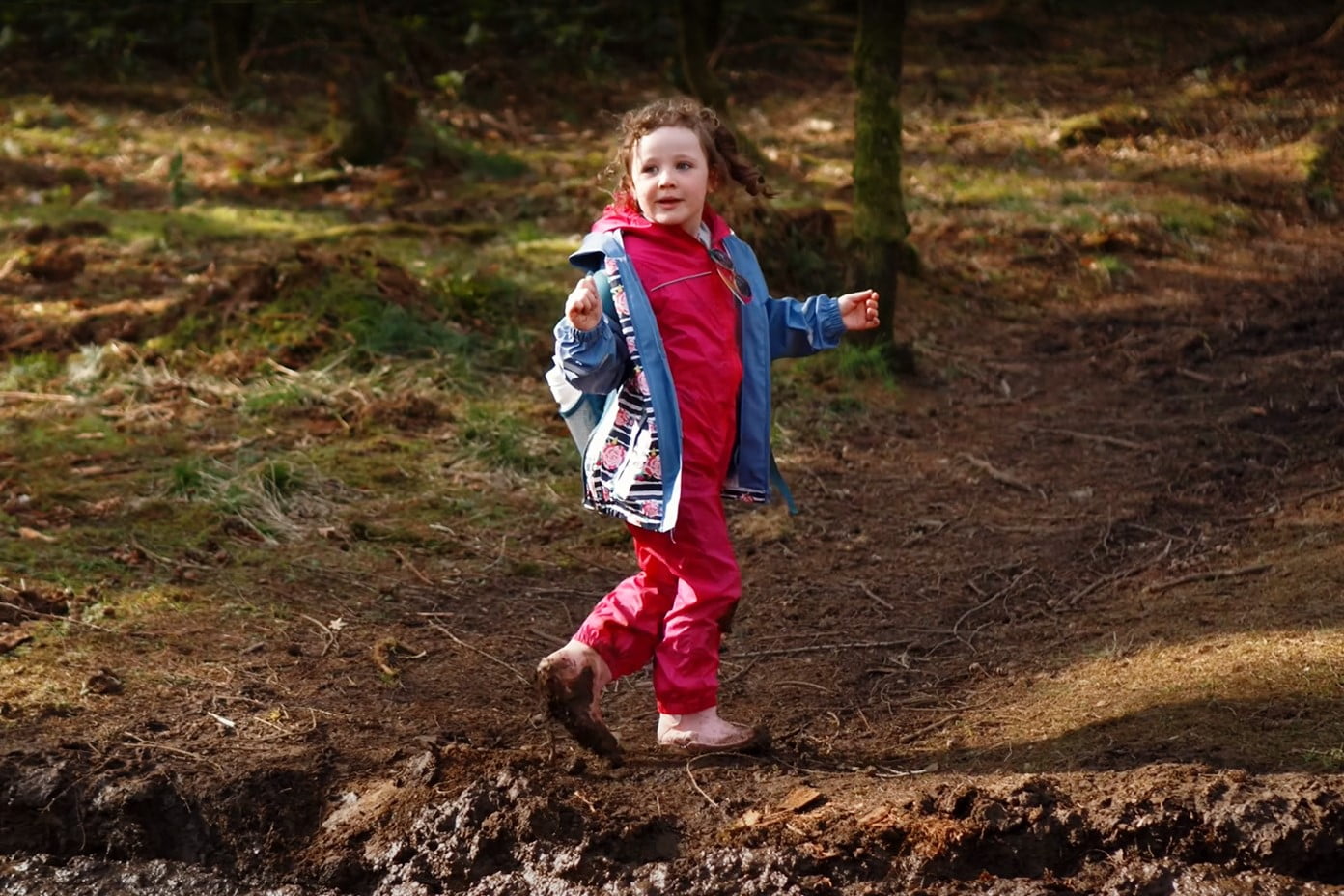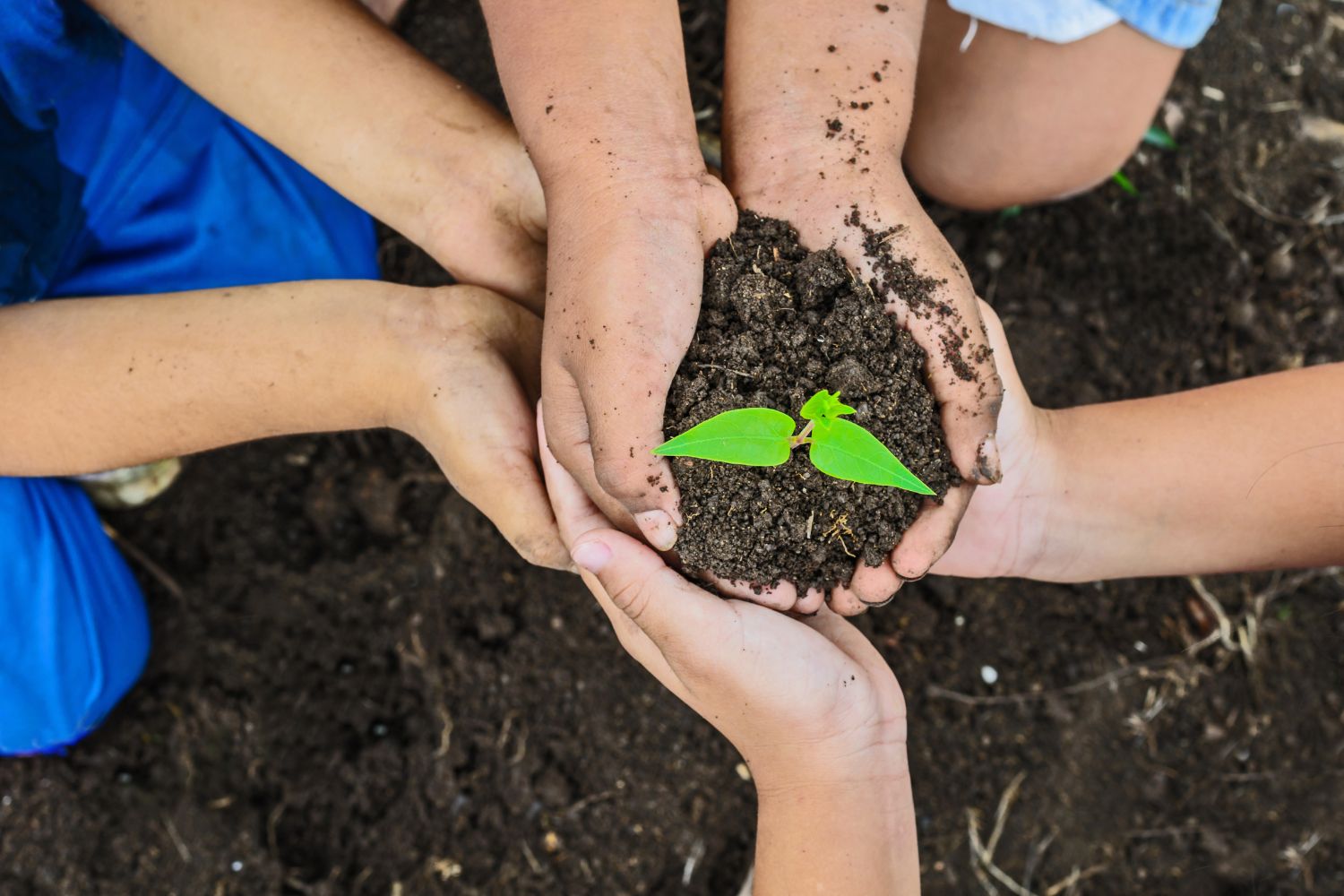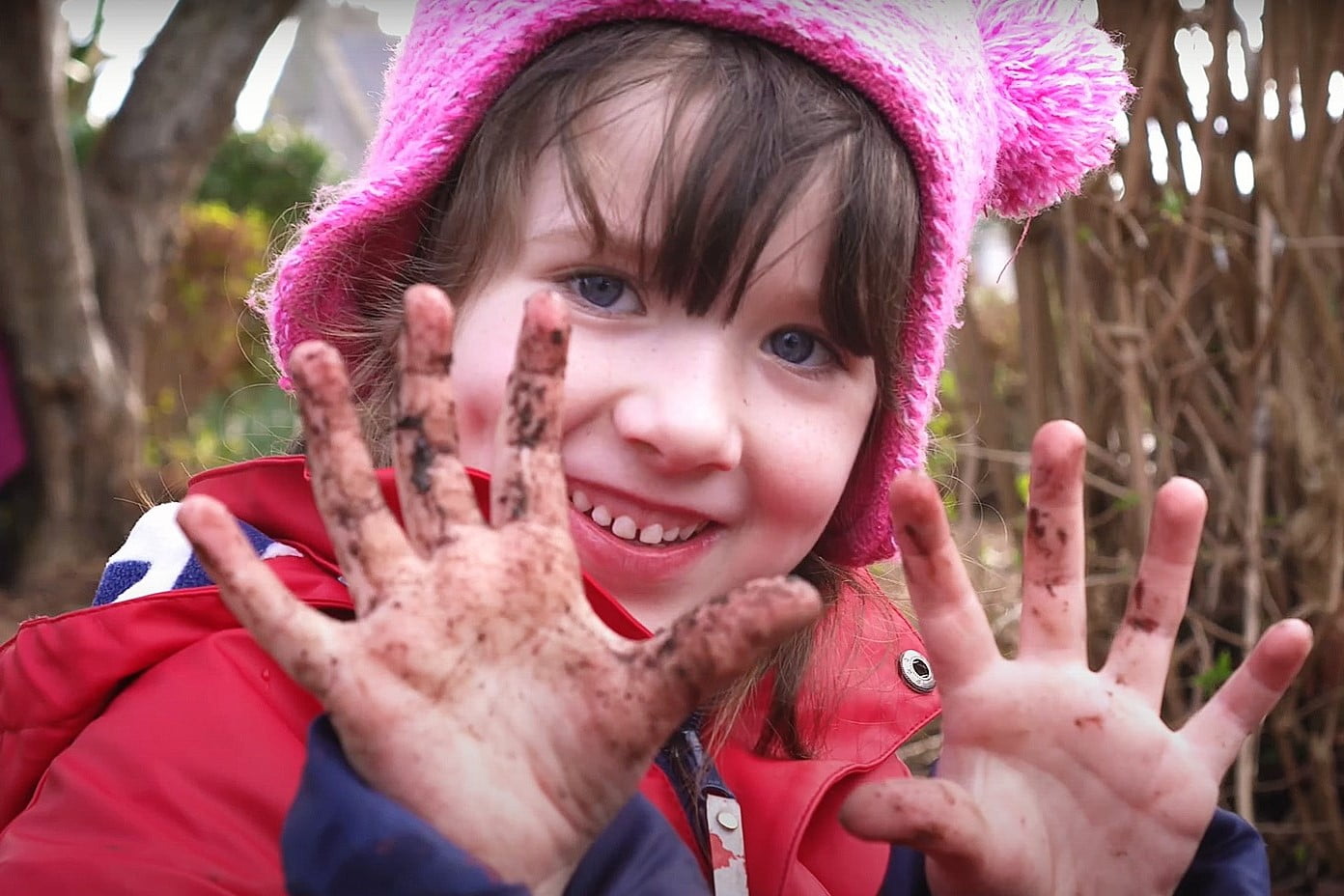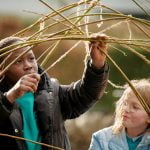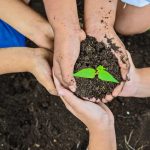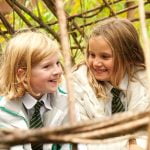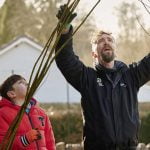How getting muddy supports children’s mental health
Our Early Years Training and Development Lead, Ali Aspin, explores the benefits of getting muddy for Children’s Mental Health Week.
As mental health challenges among children and young people reach unprecedented levels, it becomes more and more important that we create a solid foundation for good mental health and wellbeing in the early years. Connecting children with nature is not only crucial for helping them to develop a lifelong relationship with the natural world, thereby empowering them to protect it, but it’s also an important way we can support children’s mental health in the early years of their development.
We know that playing and learning outdoors benefits children’s mental health, but we also know that educators face a number of barriers to taking children outside — including rainy days! However, bad weather needn’t be an obstacle, especially when we take into consideration the fact that there’s no mud without rain! In this post, our Early Years Training and Development Lead, Ali Aspin, explores how mud play can support children’s mental health in the early years, including ten activities to try ahead of Children’s Mental Health Week.
How mud supports mental health in the early years
Often misinterpreted as the bad guy, mud is sometimes seen as an inconvenience in educational settings. We might stop children running on grass because it’s too mucky, guide children towards the sink when they eagerly show us their mud clad hands, or worry we’ll be burdened with a barrage of parent complaints if we send our little explorers home in dirty clothing.
However, time and time again, research on mud shows that exposure to healthy soil and a diverse range of plants in early childhood can have a profound influence on a child’s growth and development — from boosting the immune system to improving physical and mental health. The years between birth and the start of primary school represent a window for improving life chances and helping all children reach their developmental potential, and getting muddy is a crucial part of this chapter!
Nature serves as a multi-sensory playground for children, engaging their senses in ways that indoor environments often cannot. The sights, sounds, and textures of the natural world contribute to the development of neural pathways, promoting sensory integration and motor skills. Within this early exposure lays the foundation for enhanced cognitive abilities later in life.
Day to day, we can observe the calming effect that nature has on young minds. Time outdoors provides a reprieve from the overstimulation of modern life, reducing stress levels and enhancing emotional wellbeing. Time spent outdoors has been linked to lower rates of anxiety and improved ADHD symptoms in children, highlighting the importance of incorporating nature into early childhood experiences.
Incorporating nature into your practice at your early years setting is crucial for providing children with a holistic developmental experience. Settings with outdoor classrooms or nature-based learning report improvements in academic performance, attention span, and emotional regulation. By integrating nature and soil into early learning environments, you can create a foundation for positive mental health — let’s take a look at some ways you can incorporate mud into your setting this Children’s Mental Health Week!
10 activities for getting your hands dirty
1. Muddy Mark Making
Mark making offers an opportunity for children to express themselves through creating shapes, lines, and marks using mud as their paint. It’s a great way to encourage children to share their thoughts and feelings through the marks they make.
2. Take a Barefoot Safari
Going barefoot is a great health and wellbeing activity encouraging children to relax, improve their physical awareness and be more mindful of the sensations that they are experiencing in the moment.
3. Create a Critter
Get mucky making a critter with clay and natural objects. This is a great stimulus for self-expression through creative arts, improvised role play, story telling, or the artistic sculpture and modelling of new weird and wonderful creatures. If they are made from air-drying clay, they could become a feature of the grounds themselves for small world play.
4. Forest Bathing
Forest bathing is an activity with no activities. It’s not exercise or walking or investigating. It is simply spending time in and with nature, letting it invade our being using all of our senses.
5. Fairy Gardens
Find a small outdoor space, gather some materials, and let your imagination wander with this fairy garden activity.
6. Create a mud kitchen (or give yours a revamp)
If you have a neglected mud kitchen somewhere in your grounds, Children’s Mental Health Week could be the perfect excuse to show it some love. Top up the soil, wash off the pans, and entice your learners in with a mud kitchen surprise!
7. Charcoal Paint
Make yourself some natural paint using charcoal and vegetable oil and get creative!
8. Potions and Pies
A firm favourite of ours, this potion and pies activity allows children to use mud to create goods for their outdoor imaginary play. Children can get lost in the moment as they use natural objects to ‘bake’.
9. Create Seed Bombs
This fun gardening activity allows you to plant wildflower seeds in a sustainable way whilst enjoying a little mud play.
10. Tree Faces
Explore a range of feelings by creating tree faces with clay!
Discover more ways to support mental health in the early years
For more resources to help you support children’s mental health, visit our early years hub where you will find everything you need for outdoor learning in the early years, including lesson ideas, training, and guidance. If you’re planning to get outdoors during Children’s Mental Health Week from 5-11 February, make sure to tag us in your photos on social media using the hashtag #EverySchoolOutdoors! We’d love to see those muddy hands!
Learn more about how you can use the outdoors to support children’s mental health at school or discover top outdoor learning tips from early years educators. Make sure to sign up to our newsletter to stay up to date with the latest outdoor learning and play news!


